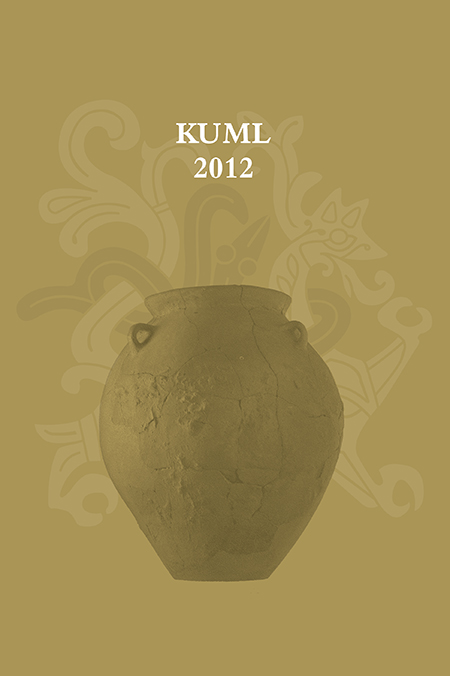Ringbrynje fra Aarhus
DOI:
https://doi.org/10.7146/kuml.v61i61.24502Nøgleord:
ringbrynje, AarhusResumé
Ring mail from Aarhus
During the almost two millennia which elapsed from the introduction of ring mail into Europe via the Roman army in the 3rd century BC until body armour went out of general use in the course of the 17th century, ring mail has played a surprisingly major role, despite the weakness of its presence in the archaeological record. When the Roman Empire collapsed in the 5th century AD, ring mail became the dominant form of armour for almost a millennium. The most commonly occurring piece, the hauberk (fig. 1), appeared with a range of variations from the Roman Empire until long after the general use of armour ceased. The introduction of plate armour in the 14th century led to flexible ring mail developing from general to more specialised use: to protect the parts of the body and joints which non-flexible iron plates were unable to cover and as a supplement to cheap types of armour such as the brigandine (fig. 2). When armour technology had, in general, reached the limit of its usefulness in the 17th century, and in step with a decline in the art of making ring mail apparent through the centuries, this form of armour largely went out of use in Europe. In the Middle East and in Africa it acquired a more ceremonial role, as a status symbol for powerful chieftains, and with no real link to its origin as body armour.
Even though the construction of ring mail is easy to explain – four rings are joined together with a fifth and these quintets are then linked together with further rings (fig. 3) – the practical execution of the technique is rather more difficult as, when the rings are correctly assembled, ring mail is only flexible in one direction (fig. 4). As the rings themselves can be made in several different ways – from wire hammered out from ingots or as cut strips of sheet iron or perhaps drawn through a swage or stamped out whole from sheet iron – and they can be assembled in various ways – either riveted, forge-welded or just butted together – this gives many possible permutations for the construction of ring mail. These factors make a useful contribution when determining the type and date of archaeological finds of ring mail.
There are five archaeological records of ring mail from Aarhus. The major excavation in Bispetorv yielded two small pieces (fig. 5). These are dated stratigraphically to the 10th century, but they are too small for their original function to be ascertained. The example from 21 Graven (fig. 6) is a long, narrow piece which was probably used to cover an armpit or similar in association with plate armour, but it is not possible to give this a more precise date than the High or Late Middle Ages. Other finds from Aarhus include a brigandine sleeve (fig. 7), dated to the end of the 16th century on the basis of its appearance and construction. The example from 27 Volden (fig. 8) is a well-made ring mail collar, dated to the second half of the 16th century on the basis of European parallels and the quality of its craftsmanship.
Ring mail has not, however, completely disappeared. It has enjoyed a veritable renaissance in recent times with butchers, zoo keepers and marine biologists who dive with sharks and other piscine predators. Ring mail’s flexibility and toughness has saved many limbs from bites and cuts in modern times, just as it shielded many limbs from ugly wounds in the past.
Lea Hillebrenner Pind
Moesgård Museum
Downloads
Publiceret
Citation/Eksport
Nummer
Sektion
Licens
Fra og med årgang 2022 er artikler udgivet i Kuml med en licens fra Creative Commons (CC BY-NC-SA 4.0).
Alle tidligere årgange af tidsskriftet er ikke udgivet med en licens fra Creative Commons.


